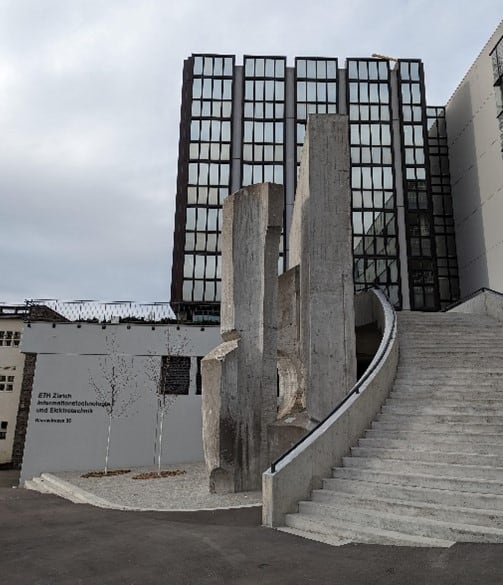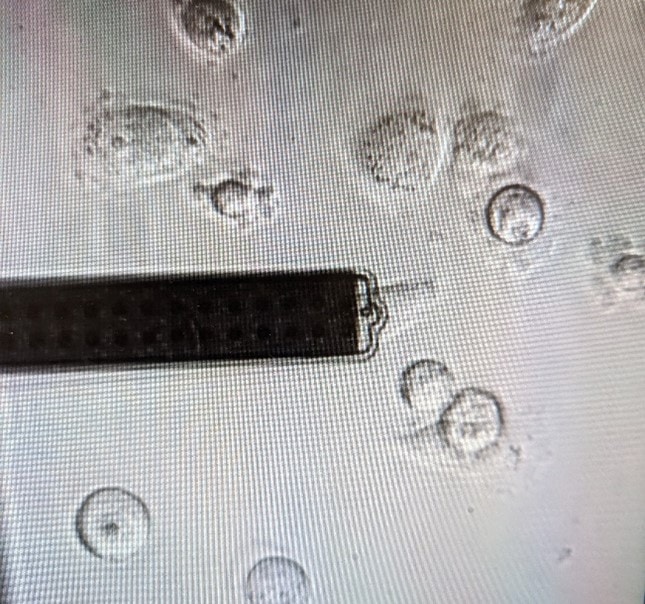Exploring FluidFM Technology at Zurich
By LifETIME CDT Student: Sabah Sardar (She/Her) (University of Glasgow)
I had the opportunity of undertaking my PhD placement at ETH Zurich in the Laboratory of Biosensors and Bioelectronics. It proved to be transformative and incredibly rewarding experience that allowed me to explore the world of Fluidic Force Microscopy (FluidFM). In this blog post, I’ll take you through my journey at ETH Zurich and my introduction to FluidFM.
ETH Zurich: A Hub of Science
ETH Zurich, the Swiss Federal Institute of Technology, is renowned for its excellence in research and innovation. Nestled in the heart of Zurich, the university is a hotspot for aspiring researchers, attracting talent from around the world. My placement at ETH provided me with access to state-of-the-art facilities, a vibrant academic community, and the breath-taking backdrop of the Swiss Alps.
My PhD placement led me to the Laboratory of Biosensors and Bioelectronics (LBB), an integral part of the Department of Information Technology and Electrical Engineering at ETH Zurich. LBB is a dynamic and innovative research group dedicated to advancing the field of biosensors, bioelectronics, and microfabrication techniques. Their commitment to pushing the boundaries of scientific knowledge and developing cutting-edge technologies is evident in the diverse range of projects and collaborations that take place within the lab. During my visit I worked in Professor Tomaso Zambelli’s group, with two of his PhD students Xinyu Zhang and Giacomo Paccagnan.
Learning FluidFM
One of the highlights of my time at ETH Zurich was my introduction to FluidFM. FluidFM is a revolutionary technology that combines the precision of atomic force microscopy (AFM) with the flexibility of microfluidics. This enables researchers to manipulate and analyse biological samples at the nanoscale while maintaining a fluidic environment. I was fortunate to carry out my placement Prof. Zambelli’s group who not only developed the device but are pushing the boundaries of FluidFM technology.
Learning the ropes of FluidFM was a challenging yet immensely rewarding experience. The technology allows for a wide range of applications for studying single cells. I am particularly interested in using FluidFM to investigate cell adhesion, cell response to injection of specific substances and force spectroscopy. The precision and control offered by FluidFM has opened new avenues for my research, allowing me to explore questions and hypotheses that were previously out of reach.
Beyond the Lab
My time at Zurich was not just about the science. Zurich’s rich cultural scene and stunning landscapes added depth and diversity to my experience. The city offered a perfect balance between scientific rigor and quality of life, making it an ideal place for academic and personal growth.
Overall, my PhD placement at ETH Zurich, and in particular, the Laboratory of Biosensors and Bioelectronics was a transformative experience that deepened my understanding of the interdisciplinary nature of scientific research. Learning about FluidFM and its applications will allow me to push the boundaries of what is possible in my work.
ETH Zurich provided the perfect backdrop for this journey, with its vibrant scientific community and cutting-edge facilities. The knowledge and skills I gained during my placement has opened new opportunities and enriched both my academic and personal life.











